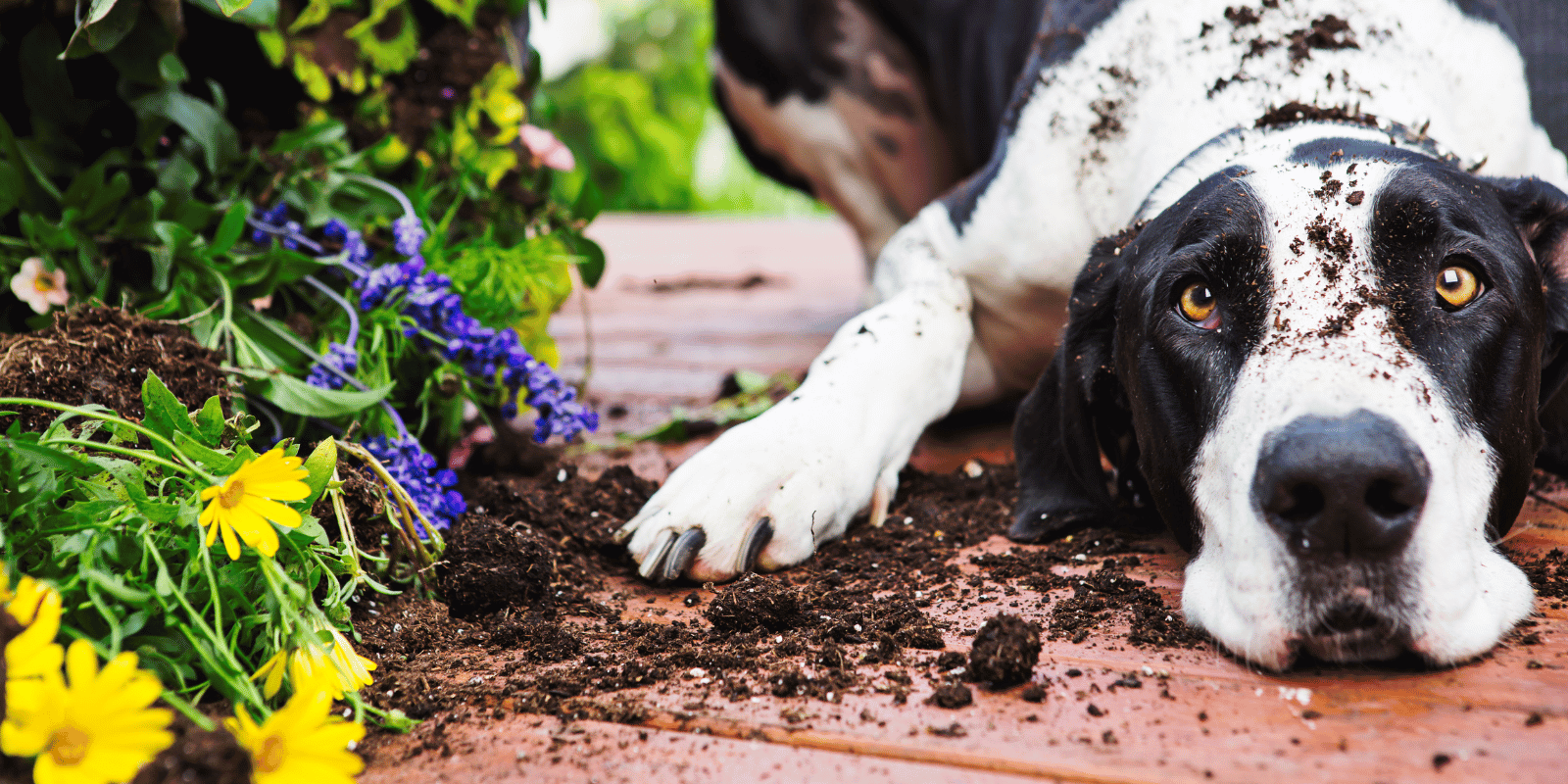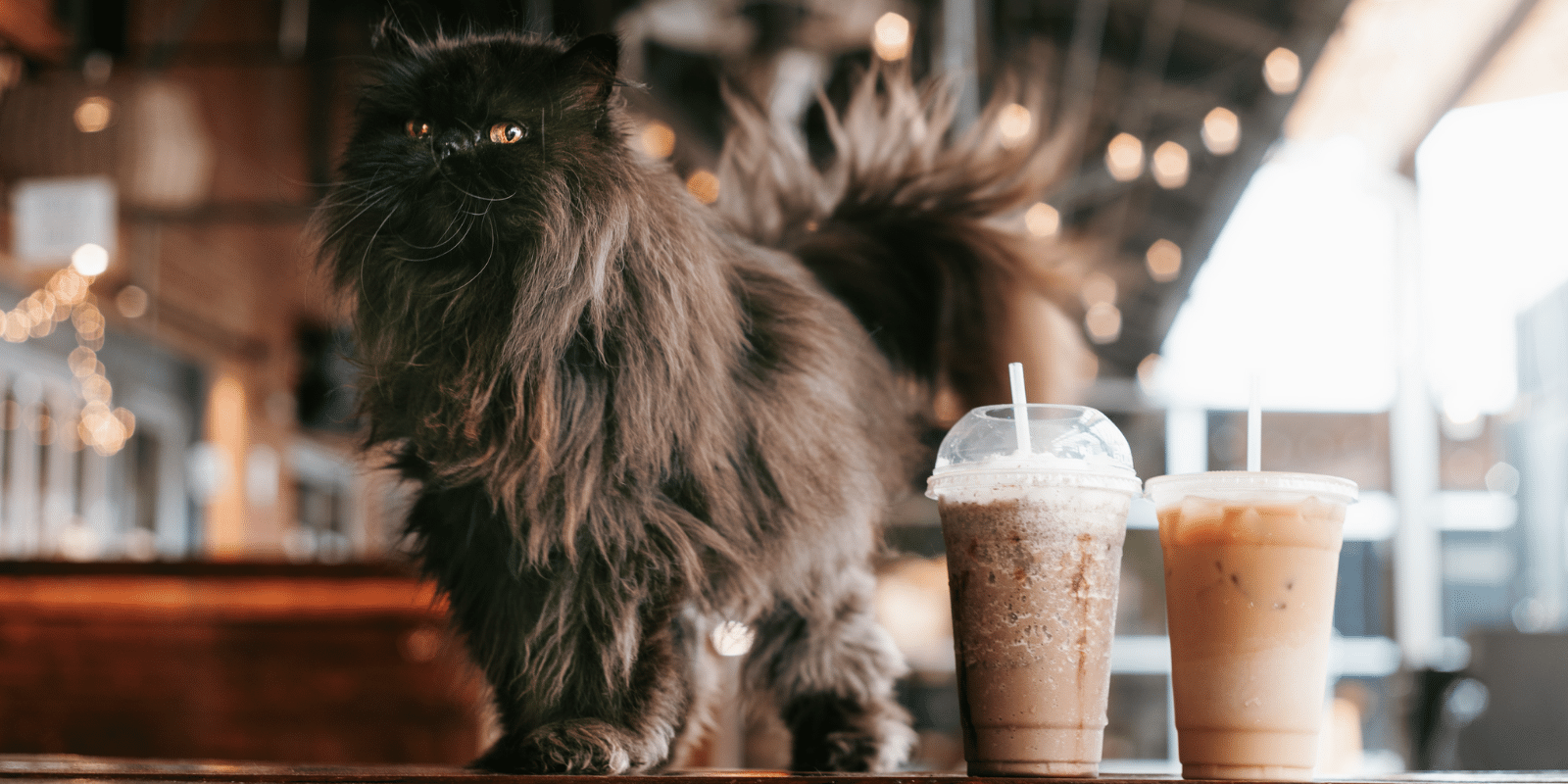When one considers how dependent we have become upon chemicals to “improve” our lives – the food we grow and eat, pest control, gardening and medications, as examples – it is no surprise that we need to be very vigilant in how and when we use these products.
Although they can be beneficial in certain circumstances, they can also present a life-threatening hazard to our pets (and our children)! One also has to keep in mind that when some of these products are used outdoors, they are also a hazard to someone else’s pet or child, as well as wildlife.
In order to better control or eliminate potential exposure, the first place to start is knowing what the common pet poisons are and appreciating how common they are.
Pet Prescriptions
Whether your pet is prescribed a preventive medication or a medication to treat a specific illness, it is very important to follow the directions exactly as they are printed on the label.
Although intended to improve your pet’s condition, too much medication (especially chemotherapy drugs) can cause harm and too little (eg. antibiotics) can either be ineffective or cause long-term issues. There are many medications that are licensed for dogs but are toxic to cats, so ensure the drugs remain in child-proof containers at all times.
If you own a horse and you take your dog to the stable with you, remember that some common deworming horse medications, e.g. Ivermectin, can be fatally toxic to certain breeds of dogs (many collie and shepherd breeds). These breeds have a genetic mutation that affects the metabolism of the drug, making them very sensitive. Because ivermectin is not always completely absorbed by the horse, a susceptible dog eating meadow muffins could be in serious trouble with such signs as depression, seizures and coma.
Human Prescriptions
Even though it is true that a great many identical drugs are used in both veterinary and human medicine, that does not mean there won’t be problems if your pet accidentally consumes one of your medications. Cats are very different from dogs and both are very different from people.
Hence, how a specific drug is metabolized can be very different between species. This means not only a huge variation in appropriate dosage but also whether or not the drug can be fatal if consumed in larger quantities.
The most common human prescriptions that are toxic to our pets include:
- Pain and arthritis medications, e.g. Aleve, Advil, Tylenol, and Motrin, as they can cause serious gastrointestinal bleeding and liver damage. Learn more about NSAIDS/dog pain relief.
- Anti-depressants, such as Effexor, Prozac and Lexapro, can cause severe stupor, incoordination and seizures. Cats particularly like the taste of Effexor and just one pill can cause significant toxicity.
- Sleep aids and anxietolytic drugs, such as Xanax, Lunesta, Valium and Ambien, can result in either severe sedative effects or can be very stimulatory to pets. Cats are especially susceptible to the effects of benzothiazepine drugs which can cause liver failure.
- ADHD/ADD drugs, e.g Ritalin and Adderall, contain highly stimulatory drugs like amphetamines and the impact on pets can cause tremors, seizures and death.
- Birth control pills, which contain the female hormones estrogen, progesterone and estradiol in various amounts, are usually not an issue if consumed in small amounts, but larger quantities can cause bone marrow suppression.
- Blood pressure medications, specifically beta-blockers like Tenormin, Coreg, and Toprol, unlike the more common blood pressure medications used in veterinary medicine (ACE-inhibitors) can cause a serious drop in our pets’ blood pressure and heart rate.
The list of human medications that are toxic to dogs and cats is virtually endless, so it is best to simply assume that whatever medication you are taking, is potentially toxic and to keep it well out of reach. Instead of a Ziploc bag, which is easily shredded, use a childproof container or a plastic pill dispenser and keep them off counters and behind cupboard doors at all times.
It is not uncommon for a pet to consume multiple medications at the same time and cases like this are especially challenging. Don’t put your medications next to your pet’s medications in order to avoid accidentally giving your medication to your pet. When you come home after a long day, hang up your purse, instead of placing it on the floor close to inquisitive noses.
What Foods Should We Never Give Our Pets?
We all like to spoil our pets and, ignoring the possible behavioural issues that result from a pet learning we are a soft touch for a treat from our plate, are there any foods that are on the never-feed list? Surprisingly, there are quite a few.
- Chocolate is probably the best-known food toxic to our pets. The active ingredient is a methylxanthine called theobromine and a general rule is the darker and more bitter the chocolate (baker’s chocolate vs white chocolate) and the smaller the dog, the more toxic chocolate can be. These products include cocoa and carob chips and depending upon how much was consumed can cause vomiting and diarrhea progressing to tremors, seizures, heart arrhythmias and death.
- Caffeine is another methylxanthine found in chocolate and in so many other products (coffee, tea, ice cream and sodas) which acts as a strong stimulant with negative effects on your pet’s heart and nervous system.
- Fatty foods or fat, which includes cleaning up a roasting pan, is a definite no-no when it comes to dogs. The issue is not putting on weight, rather it is an acute onset of pancreatitis. This is a sudden onset of pancreatic inflammation with vomiting and significant abdominal pain that requires aggressive veterinary intervention to avoid possible death.
- Grapes, currants and raisins are also on the taboo list as their consumption in dogs can lead to acute kidney failure. The actual compound that caused kidney shutdown was unknown until recently. It is now felt that the culprit is tartaric acid and so to this list one must also add cream of tartar and tamarind pods and fruit.
- Macadamia nuts are members of the nut family that are particularly toxic to dogs and cats. However, even almonds, hickory nuts, walnuts, pistachios and mouldy pecans can be a problem.
- Cherries contain cyanide in their pits, so although the cherry pulp is of no concern, the pit certainly can be.
- Onions and garlic contain a sulphur oxidant called thiosulphate which can destroy red blood cells leading to anemia. Chives and shallots should be avoided for the same reason.
- Alcohol may seem like an obvious product to avoid, but pets are very susceptible to even small amounts resulting in depression, incoordination and seizures.
- Xylitol is a sugar substitute found in a variety of human products, including candy, gum, mints, energy bars and even some brands of peanut butter. It causes an initial spike in blood sugar levels, followed by a dramatic crash with resulting seizures and possible liver failure.
- Salt in tiny quantities, say with a few chips would be harmless, but either drinking excessive amounts of salt water on the beach or consumption of a large amount of table salt can lead to initial vomiting followed by seizures and tremors due to brain swelling.
Although not strictly a toxin, other foods should be avoided. Fruit and vegetable (e.g. avocado) pits can cause intestinal blockages, especially in smaller pets. Bones from fish, poultry, rabbit and pork are especially fragile and should be avoided for fear of either becoming lodged in the intestinal tract or causing a perforation. The yeast in raw bread dough will continue to cause the dough to expand and can lead to stomach dilation and torsion.

What Plants Should Be Kept Away From My Pet?
By far the most toxic of all household plants is the lily. These plants are fortunately not toxic to dogs, but they are extremely toxic to cats. Cats are naturally inquisitive and the smallest of nibbles or tasting of any pollen that has fallen will most likely result in acute kidney failure and death, if not treated quickly and aggressively with intravenous fluids. If some well-meaning friend or relative drops off an Easter lily and you have a cat, simply get rid of it immediately. Do not keep it in the house, no matter how far away it is from your cat’s reach. In addition to Easter lilies, there are other species of lilies commonly grown in gardens that are equally toxic to cats. They are better known as Tiger lilies, Day lilies and Asiatic lilies. Some species of lilies are only mildly toxic to cats (e.g. Peace and Calla lilies), but unless you are an expert on differentiating lily species, it is safer to simply avoid them all.
If you have a puppy or are planning on getting a puppy, it makes the most sense to plant a garden that is safe from the beginning. There are numerous garden plants that can be toxic to dogs and a bored dog can be an inquisitive dog. You want to be able to confidently leave your dog (or cat) unsupervised knowing that they are unlikely to get into toxic mischief. Common garden flower varieties that can be toxic include azaleas, autumn crocus (a member of the lily family), amaryllis, daffodils, oleander and tulips. Although not as toxic as lilies with cats, these plants can cause vomiting, diarrhea and tremors, as well as liver problems.
Just as it can be confusing to differentiate the multiple types of lilies, it can be very challenging to know a toxic mushroom from one that is not. Some mushrooms seem to be tasty to both dogs and cats, presumably because of their smell and can be very toxic when consumed. Typical clinical signs can begin within a few hours and include vomiting, diarrhea, drooling, incoordination, tremors and seizures. Controlling mushrooms, especially in a cool, moist, shady part of your garden, can be difficult as they sprout forth overnight. A twice-daily check is usually sufficient and removal wearing latex gloves is an effective form of prevention. Treating all mushrooms as potentially toxic is the safest approach.
Other Garden and Garage Hazards
If you are a homeowner that enjoys a meticulously maintained garden, using fertilizers, herbicides and pesticides to ensure a green lawn and control grubs and insects might be part of your arsenal. You might even employ a lawn service to do this for you.
However, it is important to appreciate that these products can be extremely toxic to pets, children, and wildlife. It goes without saying that these must be kept safely packaged in sealed containers, labelled and out of reach of pets and kids.
- Blood meal – as it sounds, it is derived from the blood products of livestock animals and is very high in nitrogen, so makes a very good fertilizer. However, when ingested it can cause vomiting, diarrhea and acute pancreatitis. Like other fertilizers, it is also high in iron which can result in iron toxicity (vomiting, bloody diarrhea and heart issues).
- Bone meal – is derived from the bones of livestock and crushed into a fine powder. Again, it is a great organic fertilizer, but because of its source, it is also very tasty. If consumed in sufficient quantities it can harden into a lump and cause an intestinal obstruction requiring surgical removal.
- Mulch – Most mulches can be quite benign. However, cocoa mulch is quite popular and as you might guess, it is derived from cocoa bean shells and consequently high in the same methylxanthines as chocolate. The aroma that makes it so popular in gardens also makes it attractive for dogs to eat. Another choice of mulch would be a better solution if you own a dog.
- Insecticides – Most of these chemicals are either organophosphates or carbamates and they are both highly toxic to pets (and people). Depending upon where one purchases these products (e.g. Sevin, dichlorvos, Golden Malrin, Diazinon, Malathion) the concentration of active ingredients can vary widely. In agricultural settings, full hazmat suits are recommended to minimize exposure and one must be licensed to apply them. The concentrations in products bought in retail stores are less, but these are still the same chemicals. They can also be found in other products like rose fertilizer. Clinical signs usually occur very shortly after exposure and would include vomiting, diarrhea, salivation, and tearing and can lead to depression, and seizures.
- Rodenticides – If one has a problem with mice or rats, especially in the Fall when they seek shelter from the oncoming cold weather, there is the temptation to use these products to control the population; either inside or outside of the house. The first generation of rodenticides (e.g. warfarin) are the best known and cause death through inhibiting Vitamin K which causes extensive internal bleeding over a matter of days. Should your pet be exposed to one of these baits, there is fortunately specific antidotal treatment.
With the newer generational rodenticides, there is not and THEY ARE EXTREMELY TOXIC, especially to cats. Products containing cholecalciferol (Vitamin D3) act by increasing blood calcium levels rapidly to the point where it leads to acute kidney failure. Without a specific antidote, treatment is lengthy and expensive with aggressive intravenous fluids and frequent blood tests with a guarded prognosis.
Bromethalin is also very toxic and cats are, again, very susceptible. In both dogs and cats, only a small amount ingested can be fatal. The chemical works by causing brain swelling and treatment can be successful if initiated immediately and over a lengthy period of time. What is not commonly known is that these baits are sold in blocks that have different colours representing the ingredients and concentrations of those ingredients. However, there is no standardization between companies as to the significance of the colours. Hence, one might think one is buying a warfarin product when, in fact, one is not. - Antifreeze – Engine coolant and windshield wiper fluid commonly use ethylene glycol as the active chemical to avoid freezing in cold temperatures. It is also found in various paints, solvents, brake fluid, motor oil and even Christmas snow globes. It can have a taste that is appealing to pets and either spillage when filling your car’s reservoirs or a slow leakage onto the driveway can be life-threatening to your pet. Ethylene glycol is very toxic and causes acute kidney failure in even very small amounts. One teaspoon can be fatal to a cat and as little as 1 to 5 teaspoons can be fatal to dogs. Prompt treatment is essential for a successful outcome. For pet owners that have cottages, ethylene glycol products are commonly used as part of the winterization process for the plumbing system every Fall. It is very effective, however, when the family returns in the Spring, the first place the family dog heads for a drink after a long drive is either the lake or a toilet. The latter can have devastating consequences.
What To Do If I Think My Pet Has Ingested a Poison?
In spite of your best efforts to keep your pet away from the many potential toxins around the house, if you are suspicious that there has been an exposure, what do you do?
The first thing is to remove your pet from the exposure area and prevent any other pets from being exposed while you deal with this emergency. The next task is to collect a sample of the poison and any relevant packaging that describes exactly what it was. Contact your veterinarian or a poison control centre immediately. Do not induce vomiting or give a home remedy unless you are instructed to do so, either by your veterinarian or the toxicologist at the poison control centre.
With the vast majority of toxins time is important, so if you are unable to contact help by phone, immediately take your pet (along with the poison and packaging) to the nearest veterinary emergency hospital. In case your pet is being supervised by someone else in your absence, and to avoid time wasted searching for the information in a crisis, post the telephone number of your veterinarian prominently for easy access, along with both commonly used veterinary poison control centres.
- Pet Poison Helpline 855-764-7661
- ASPCA 888-426-4435
Both of these hotlines are open 24/7, are based in the US, and are staffed with highly qualified veterinary toxicologists. Have a credit card ready as there is a fee to use their life-saving expertise, but this fee is covered by your Furkin pet insurance policy.
The best approach to any poison exposure is prevention. Ideally, don’t use toxic chemicals or products, but if one must, then ensure that they are safely stored away at all times.


%20(7).jpg?width=554&name=Copy%20of%202022%20-%20Q2%20FN-Social-IG-TGIFF-1080x1080%20(Twitter%20Post)%20(7).jpg)
